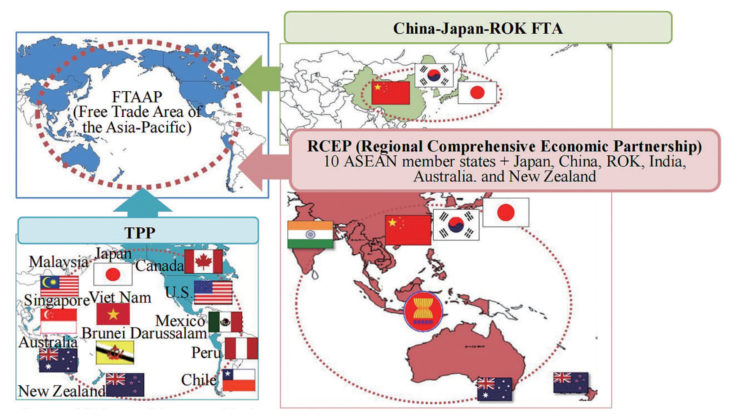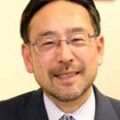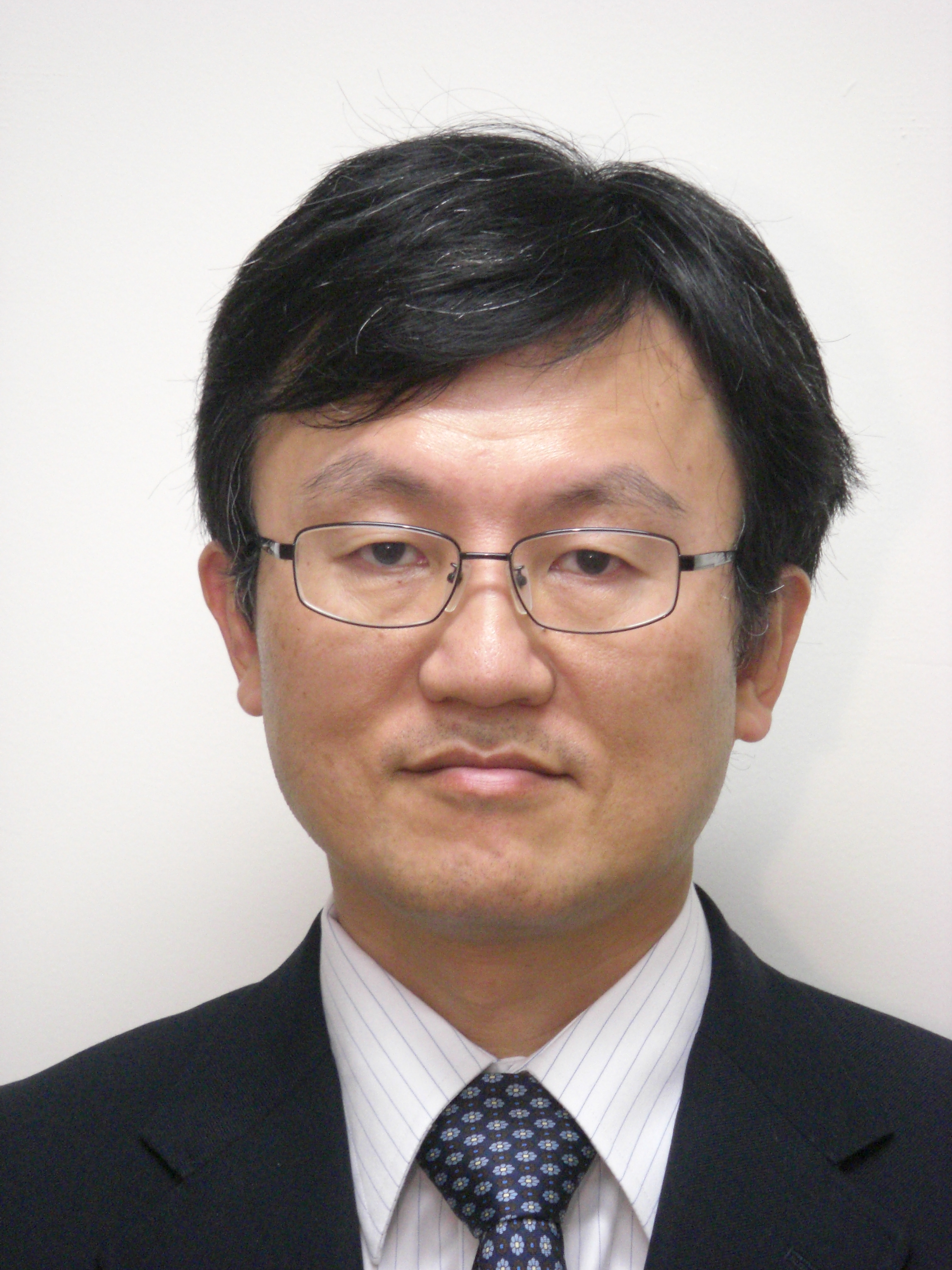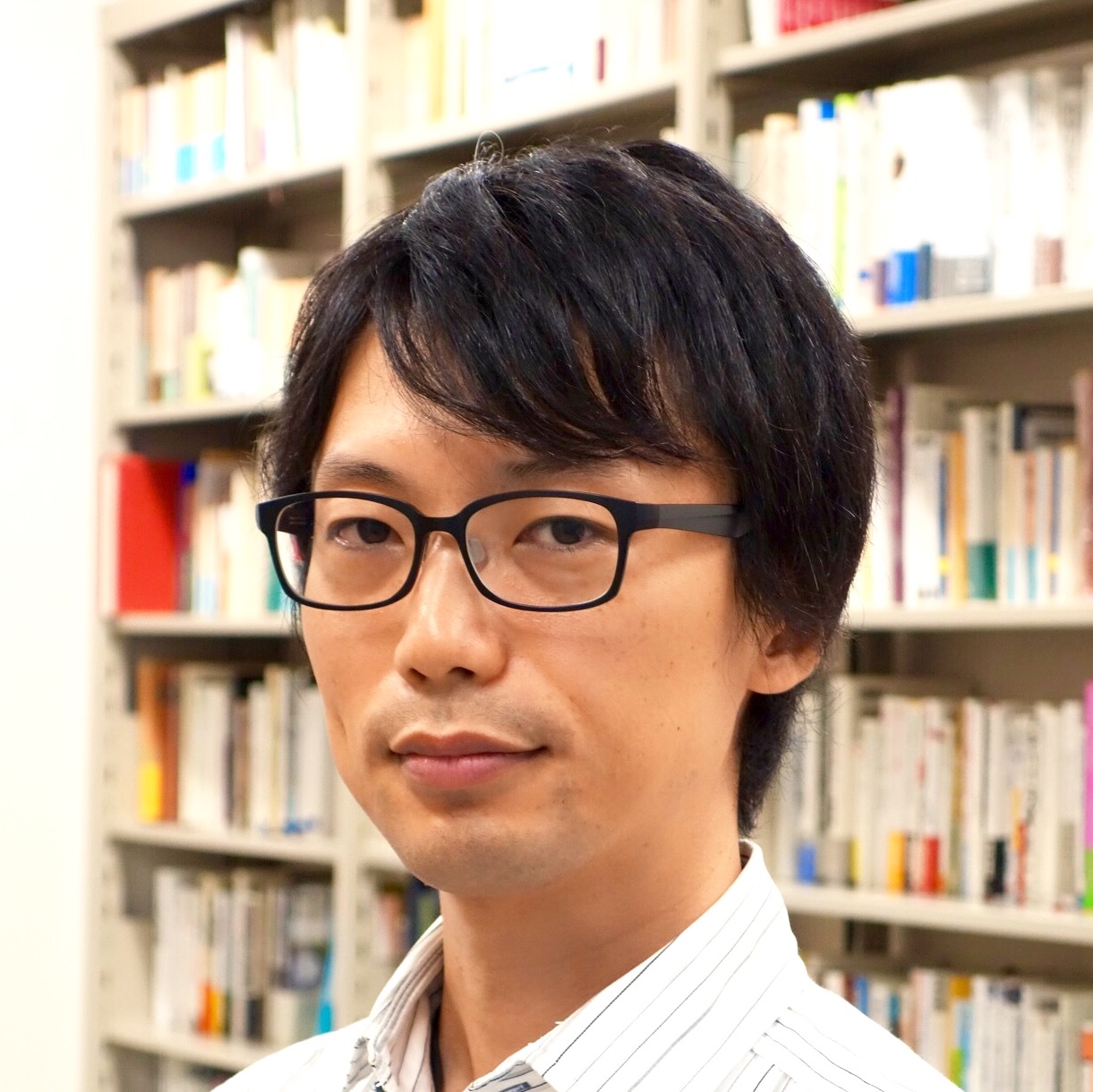Trade: New Partners
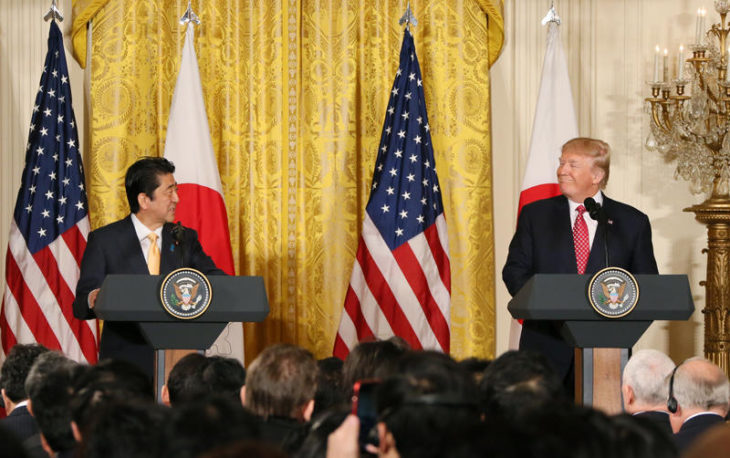
Prime Minister Abe with President Trump following the Japan-US summit meeting at the White House, 10 February 2017
PHOTO: CABINET PUBLIC RELATIONS OFFICE
Prime Minister Abe continues to stress his commitment to a range of key Free Trade Agreements despite the recent setback of US withdrawal from the Trans-Pacific Partnership.
As globalization has accelerated, the importance of the liberalization of trade, not only in goods but also services, has become widely recognized in international society. Discussions about the benefits and risks of globalization are held around the world. Everyone understands that trade negotiations may be difficult, but the expectation in international society is that free trade will inevitably spread as the various difficulties are overcome to form a better trade scheme for the coming era.
Nevertheless, on January 23, the United States decided to withdraw from the Trans-Pacific Partnership (TPP) negotiations and agreement. The decision startled not only the countries party to the TPP but also promoters of free trade around the world. Soon after the US withdrawal, foreign media reported that Australia and New Zealand hoped to salvage the TPP by encouraging China and other Asian countries to join the trade pact. Meanwhile Japanese media reported that Chile had called for a ministerial-level meeting involving China, Republic of Korea (ROK) and Columbia to discuss the TPP. An analyst at a Chinese governmental think tank commented that China has no reason to reject participation in TPP negotiations if invited. China has heretofore emphasized the importance of the Southeast Asian-backed Regional Comprehensive Economic Partnership (RCEP) and Free Trade Area of the Asia Pacific (FTAAP).
At the World Economic Forum Annual Meeting on 17 January 2017, Chinese President Xi Jinping stated, “We must redouble efforts to develop global connectivity to enable all countries to achieve inter-connected growth and share prosperity. We must remain committed to developing global free trade and investment, promote trade and investment liberalization and facilitation through opening-up, and say no to protectionism. Pursuing protectionism is like locking oneself in a dark room. While wind and rain may be kept outside, that dark room will also block light and air. No one will emerge as a winner in a trade war.”
According to some foreign media, Chinese politicians and intellectuals are trying to fill the vacuum created by the United States’ stepping back from the global leadership role in free trade, and the leader of the world’s largest communist party is thinking afresh about the importance of free trade. When it comes to strengthening free trade promotion without the United States, media are now reporting that China cannot be ignored, or that Europe’s new partner is Asia.
Todd McClay, head of the New Zealand Ministry of Foreign Affairs and Trade, is reported to have said that American withdrawal from the TPP was not unexpected but a disappointment, and suggested that TPP countries come together to consider the next steps. He said that the TPP signatories, Brunei, Chile, Singapore, Australia, Canada, Japan, Malaysia, Mexico, New Zealand, Peru and Vietnam, all see the value of the TPP framework even without the United States and mentioned the possibility that the United States may come back to the TPP in due course.
Japan’s Policy
Focusing mainly on multilateral efforts in the WTO, Japan has promoted its external economic policy by utilizing regional and bilateral agreements such as FTAs and EPAs as a supplement.
Figure: Free-trade Pacts and Pathways to FTAAP
Before the United States withdrew from the TPP, Japan’s target was to raise the ratio of already signed or effective EPAs/FTAs to the total trade value (FTA ratio) from the current 22.3% to 70% by 2018. The target is one of the pillars of Abe’s economic growth strategy. In this sense, Japan has placed great significance on the TPP.
In answer to questions about the US withdrawal from the TPP, Abe has stated that Japan would continue to patiently explain the importance and benefits of the TPP agreement to the Trump administration.
Abe has repeatedly explained the value to Japan of joining TPP negotiations. In his policy speech to the 193rd Session of the Diet on 20 January 2017, Abe stated:
“We will, as the standard-bearers of free trade, build a 21st century economic system based on fair rules. The TPP Agreement sets the standard for this, and will be a cornerstone of future economic partnerships. In addition to aiming for the earliest possible conclusion of the Japan-EU EPA, we will take the lead in negotiations to see that frameworks such as the RCEP become ambitious agreements and work to extend free and fair economic zones across the world.”
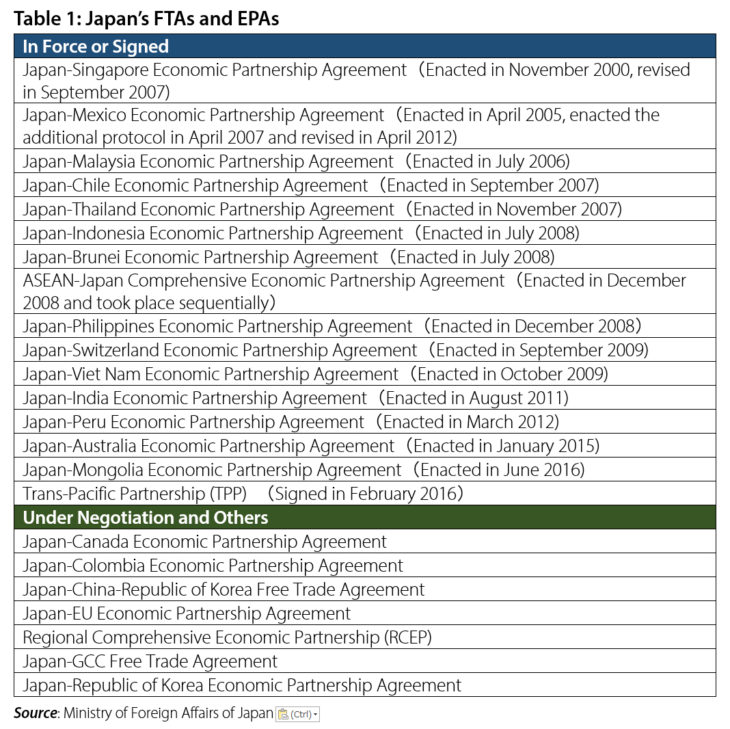 The slogan of Abe’s foreign policy is “Diplomacy that takes a panoramic perspective of the world map.” Accordingly, Abe has made official visits to sixty-six countries and regions and 110 trips in total during his second and third Cabinets (as of the end of January 2017).
The slogan of Abe’s foreign policy is “Diplomacy that takes a panoramic perspective of the world map.” Accordingly, Abe has made official visits to sixty-six countries and regions and 110 trips in total during his second and third Cabinets (as of the end of January 2017).
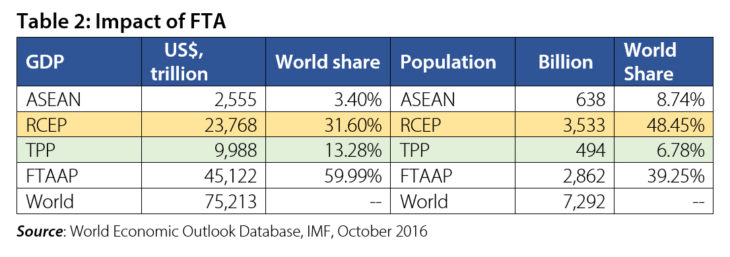 During his trip to Australia in January 2017 before the aforementioned policy speech to the Diet, Abe met Prime Minister Turnbull. The two leaders stressed in their summit meeting that implementing TPP remains an indispensable priority because of the significant economic and strategic benefits it offers.
During his trip to Australia in January 2017 before the aforementioned policy speech to the Diet, Abe met Prime Minister Turnbull. The two leaders stressed in their summit meeting that implementing TPP remains an indispensable priority because of the significant economic and strategic benefits it offers.
They also reaffirmed that a high-quality RCEP offers opportunities for closer regional economic integration.
At the same time, Japan has continued other FTA and EPA negotiations. However, the speed of progress has been rather slow (see Table 1). Japan has placed a great importance on FTAAP and RCEP negotiations, viewing them as FTAs which have potentially enormous benefits for the nation. However, no mega FTAs have been concluded to date.
Along with making a fresh start to TPP negotiations without the United States, Japan will commit intensively to RCEP negotiations with Australia and New Zealand. RCEP is the proposed FTA of ASEAN with Australia, China, India, Japan, ROK and New Zealand. The population of this zone is about 3.53 billion, or 48.5% of the world population (2016, IMF estimate). GDP in the zone amounts to 23,768 trillion US dollars, approximately 31.6% of the world GDP in 2016 (see Figure and Table 2). Irrespective of the scale of the RCEP, Japan emphasizes in its foreign trade policy a desire “to extend free and fair economic zones” with nations which share the values of freedom, democracy and respect for human rights for the healthy and stable prosperity of the region.
Free and Open Indo-Pacific Strategy
On 27 August 2016, Abe introduced the Free and Open Indo-Pacific Strategy at the Sixth Tokyo International Conference on African Development (TICAD VI) held in Nairobi, Kenya. Abe said, “Japan bears the responsibility of fostering the confluence of the Pacific and Indian Oceans and of Asia and Africa into a place that values freedom, the rule of law, and the market economy, free from force or coercion, and making it prosperous.”
Economic prosperity of course depends upon security. Abe’s remark suggested that Japan is seeking a framework to which all trade partners in FTAs should share common principles and values of democracy and free trade.
In his speech, Abe stressed that the population in Asia living in democracies is more numerous than in any other region on Earth, and that the region has enjoyed growth on the basis of the democracy, rule of law and market economy that has taken root there.
He closed his speech by saying, “Let us make this stretch that is from Asia to Africa a main artery for growth and prosperity. Let us advance together, Africa and Japan, sharing a common vision.”
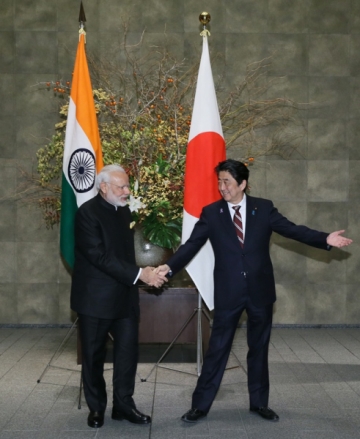
Prime Minister Abe with Indian President Narendra Modi before the Japan-India Summit Meeting in Tokyo, 11 November 2016
PHOTO: CABINET PUBLIC RELATIONS OFFICE
Sharing Principles and Values
In November 2016, Abe held a summit meeting with Indian President Narendra Modi in Tokyo. The two leaders underscored the rising importance of the Indo-Pacific region as the key driver for the prosperity of the world. Modi talked about the active engagement in the region by the Act East Policy and Abe explained the Free and Open Indo-Pacific Strategy. The leaders discussed the potential for deeper bilateral cooperation and synergy between the respective Policy and Strategy. India is Asia’s biggest democratic nation, and in a sense is the key nation for the success of the RCEP negotiations and agreement.
From January 12 to 17, 2017, Abe visited the Philippines, Australia, Indonesia and Vietnam, and explained the Free and Open Indo-Pacific Strategy to the leaders he met. The Strategy to connect the Indian Ocean and Pacific Ocean, and to deepen economic and security cooperation, was broadly welcomed by the leaders.
The purpose of Abe’s visits was economic dialogue and strengthening the relations between countries based on Abe’s new strategy.
The effects of TPP will go beyond the economy even without the United States. The TPP is expected to deepen the bonds among participating countries that share the same basic values and will contribute to stabilizing the zone.
Abe visited the United States on 10 February 2017 and held a summit meeting with US President Trump. At the press conference after the summit, Abe said, “In the Asia Pacific region, with Japan and the United States taking on the leadership, a free and fair market based upon rules should be built. President Trump and I have confirmed our strong will to do so… On the economy, we will seek a trading relationship that is free, fair and reciprocal, benefitting both of our countries.”
In answer to one question from the media regarding the TPP, Abe said:
“Now, for the free and fair common set of rules to be created for the free trade regime in the [Asia-Pacific] region, and that was the purpose of TPP, that importance has not changed.”
TPP members will now embark on discussions on an alternative partnership without the United States but with a “common set” of rules.
Translated from an original article in Japanese written for Discuss Japan. [February 2017]
